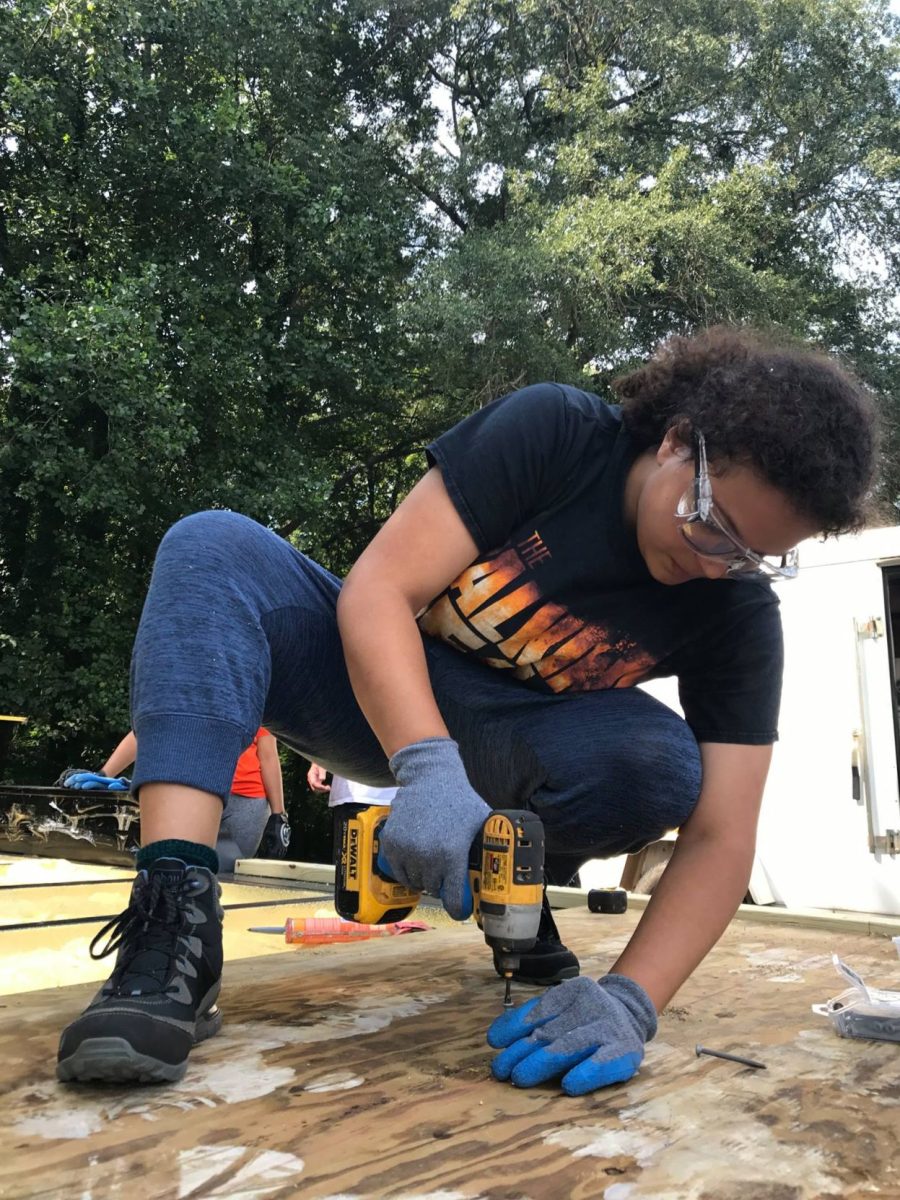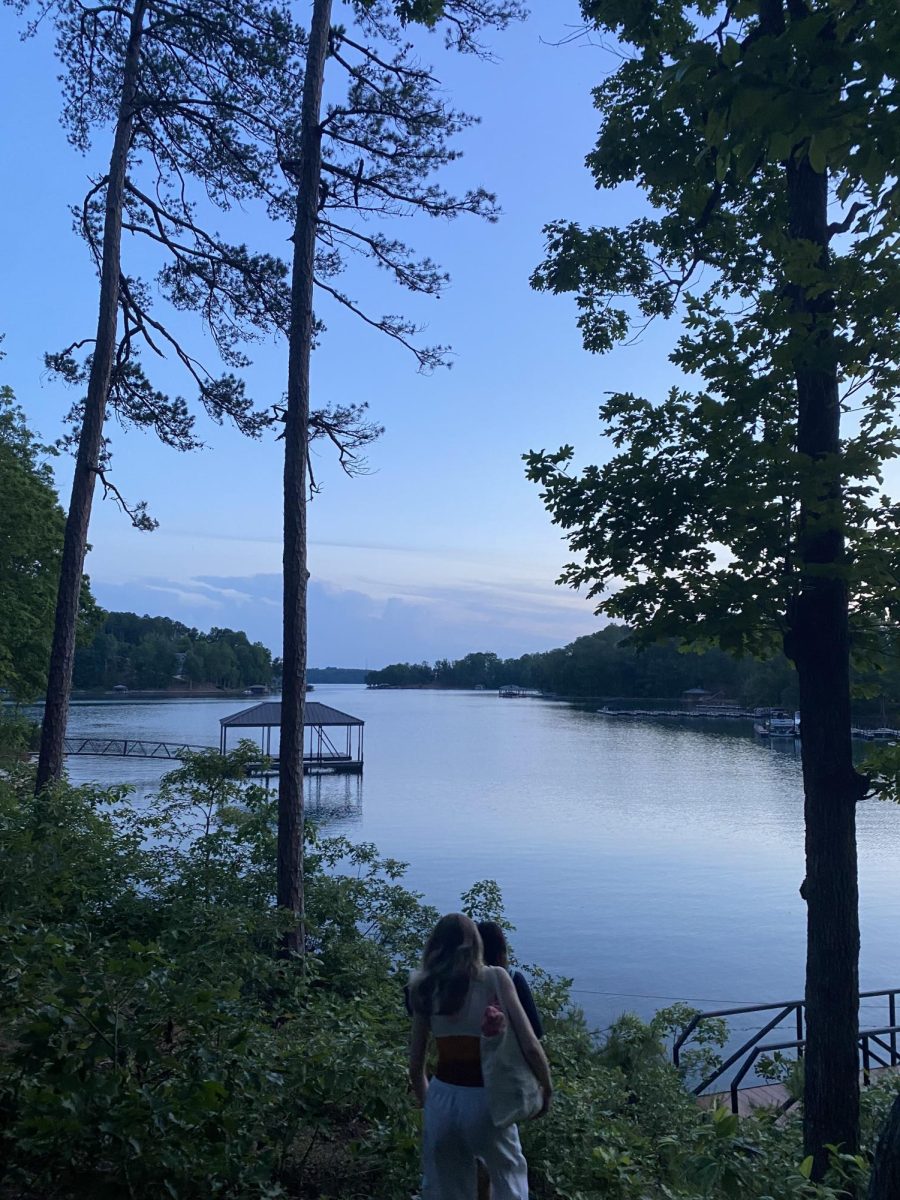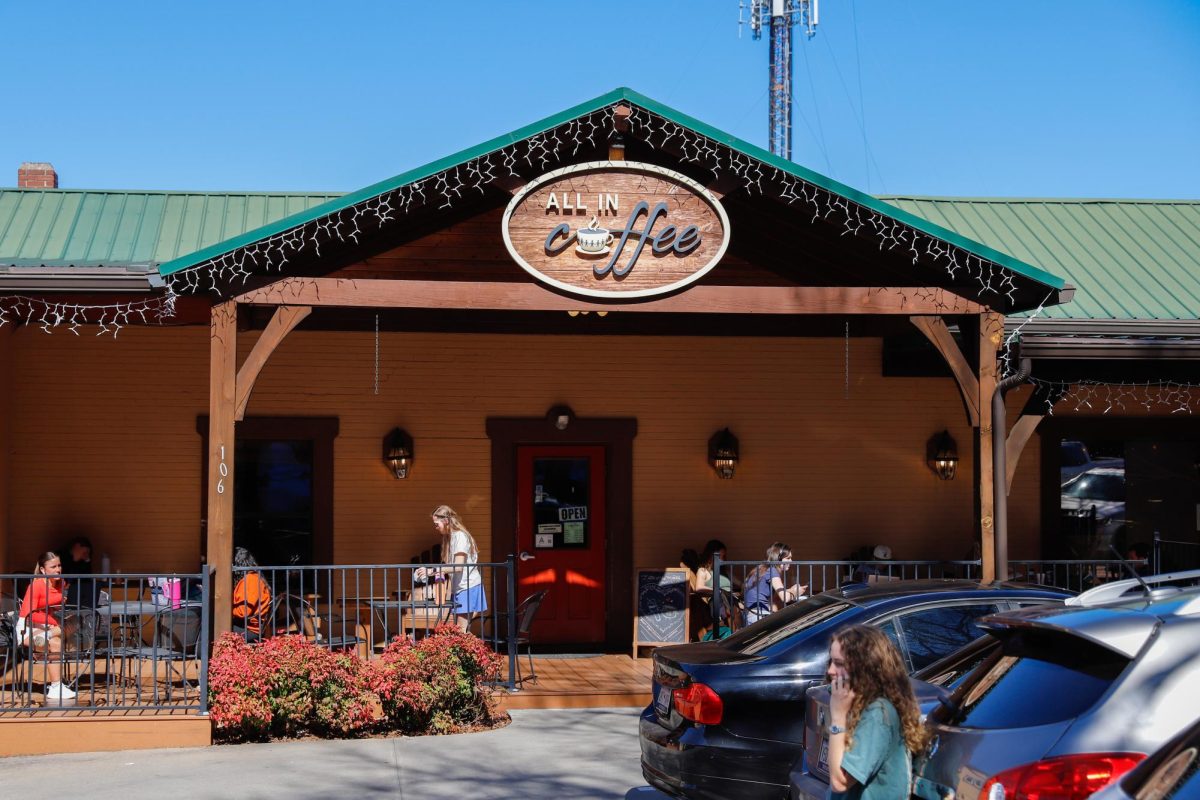Peace Church, United Church of Christ (UCC) pastor and Pr(i)sm advisor Bruce Schoup was visiting the Tree House Project in Seneca when he came up with an idea: a tiny house that would serve as temporary housing for members of the LGBTQ+ community that have been displaced from their homes.
“Sitting on [the] lot was a tiny house on wheels as a trailer,” Schoup said. “I was looking at it, and I said, ‘I think we can do that.’”
Since then, Schoup, along with members of his congregation and Clemson students, faculty and community members, have worked on designing, building and creating a management plan for the tiny house.
Schoup says there’s a need for temporary housing for LGBTQ+ people in the Upstate, a problem that’s found in many other areas of the U.S. According to a 2012 study conducted by the Williams Institute at the UCLA Law, 1.6 million young people experience homelessness in the U.S. every year. 40 percent of them identify as members of the LGBTQ+ community.
“One of the places of victimization [for] many LGBTQ people … [is] when they are either ‘outed’ to their family or take the risk and ‘come out’ to family members,” Schoup said. “[Some] are given a message something like ‘If you do not become straight, you are no longer welcome here.’ And so what happens if you suddenly get thrown out of your house simply because you don’t fit into the traditional straight category? … How do you provide housing for an individual who might need to leave?”
That’s one of the key reasons why the house is mobile.
“When an individual faces rejection from their community and is in need of a place to stay, the goal is that the house will be able to travel to them, so that finding a safe place to live will be one less thing that they have to worry about during a jarring and stressful period,” said Tyler Rodgers, a senior architecture major who designed the house.
Schoup added that while mobility was a definite concern, he and the group wanted individuals to feel like they had a place that would make them feel special and safe.
“If we were just concerned about providing safe housing that’s mobile, we could go buy a camper,” Schoup said. “But a camper’s a camper. They’re kind of cool, but what we wanted was to have the individual feel like they are moving into something that was made special just for them.”
Rodgers says a combination of design elements — including a curved, vaulted roof and two walls full of windows — will help the home feel more spacious and sanctuary-like while also allowing for natural light and better air circulation.
In addition, the group has worked to make the house as sustainable as possible. Schoup says that while they won’t be able to make the house 100 percent sustainable, several elements have been included in the design to make it hybrid.
The group worked with Clemson Electrical and Computer Engineering professor Rajendra Singh to implement a solar system to offset the home’s energy needs. Rodgers also incorporated the use of wood and salvaged materials into the building materials as well as insulating to decrease the energy needed for heating and cooling.
Rodgers said that she has enjoyed working on the project and could see herself involved with similar ones in the future.
“I believe that every person deserves a safe place to call home, regardless of their gender identity or sexual orientation,” she said. “This project allows me to combine my love of sustainable housing with my support of the LGBTQIA+ community.”
Schoup says the goal is to have the house completed by the end of the semester. He added that the group is still working on creating a management plan for the house.
“[That] is the beautiful part of the plan: there is no plan,” Schoup said. “We want to bring together a group of Clemson students and community members to create a management plan … We really want this to rise out of Clemson individuals.”
Schoup added that the tiny house will mainly serve the Upstate of South Carolina, but it could possibly expand to other areas in the future. Depending on how the process of building and managing this house goes, additional ones could be constructed.
Schoup says that the Clemson community has played a large part in the planning and construction of the tiny house. Several campus groups, including SAGA and Pr(i)sm, have gotten involved as well as a few professors. In addition, the Botanical Gardens offered the group space for the project, and Schoup says several employees have come to help.
Senior Language and International Trade major Lilyan Ibarra, who works as a communications intern for Peace Church, became involved in the project after learning about it from SAGA.
“It [the tiny house project] really strikes a chord with me because I’m [a] member of [the] LGBTQ+ community, and I want to give back to a community that’s helping me grow and helping me find who I truly am,” Ibarra said.
Schoup says that he’s been amazed at the overall support shown for the project.
“[At] a totally unrelated meeting that had nothing to do with church, an older gentleman walked up to me and my church moderator and threw his arms around both of us and said ‘I’ve always been supportive of and an ally to the LGBTQ community, but it just hit home to me in a profound way when my teenage grandson committed suicide because he was being bullied for being gay,’” Schoup said. “This is a person who’s in tears telling us how much he appreciates what this project is about, and that’s when you start to realize there is … a profoundly important story that’s taking place. This may only seem like a catchy idea, but it’s not. It’s not only a place that’s about affirmation, but it is about helping to shift people’s thinking in a positive and healthy way.”
Those who are interested in helping with building or creating a management plan can reach out to Schoup at [email protected] or to Ibarra at [email protected].
Categories:
Upstate Sanctuary: Clemson community comes together to build tiny house for LGBTQ+
Katie McCarthy, News Editor
August 28, 2017
Contributed by Bruce Schoup
Freshman physics major Naomi Lemon works on construction for the Tiny House. Tiny House is a mobile residency for LGBTQ+ youth in the community.
0
Donate to The Tiger
Your donation will support the student journalists of Clemson University. Your contribution will allow us to purchase equipment and cover our annual website hosting costs.
More to Discover








